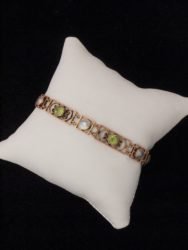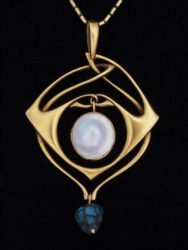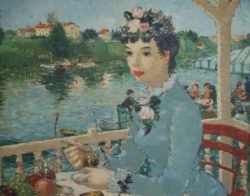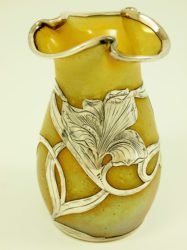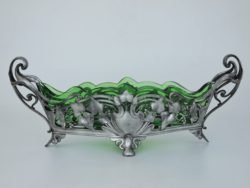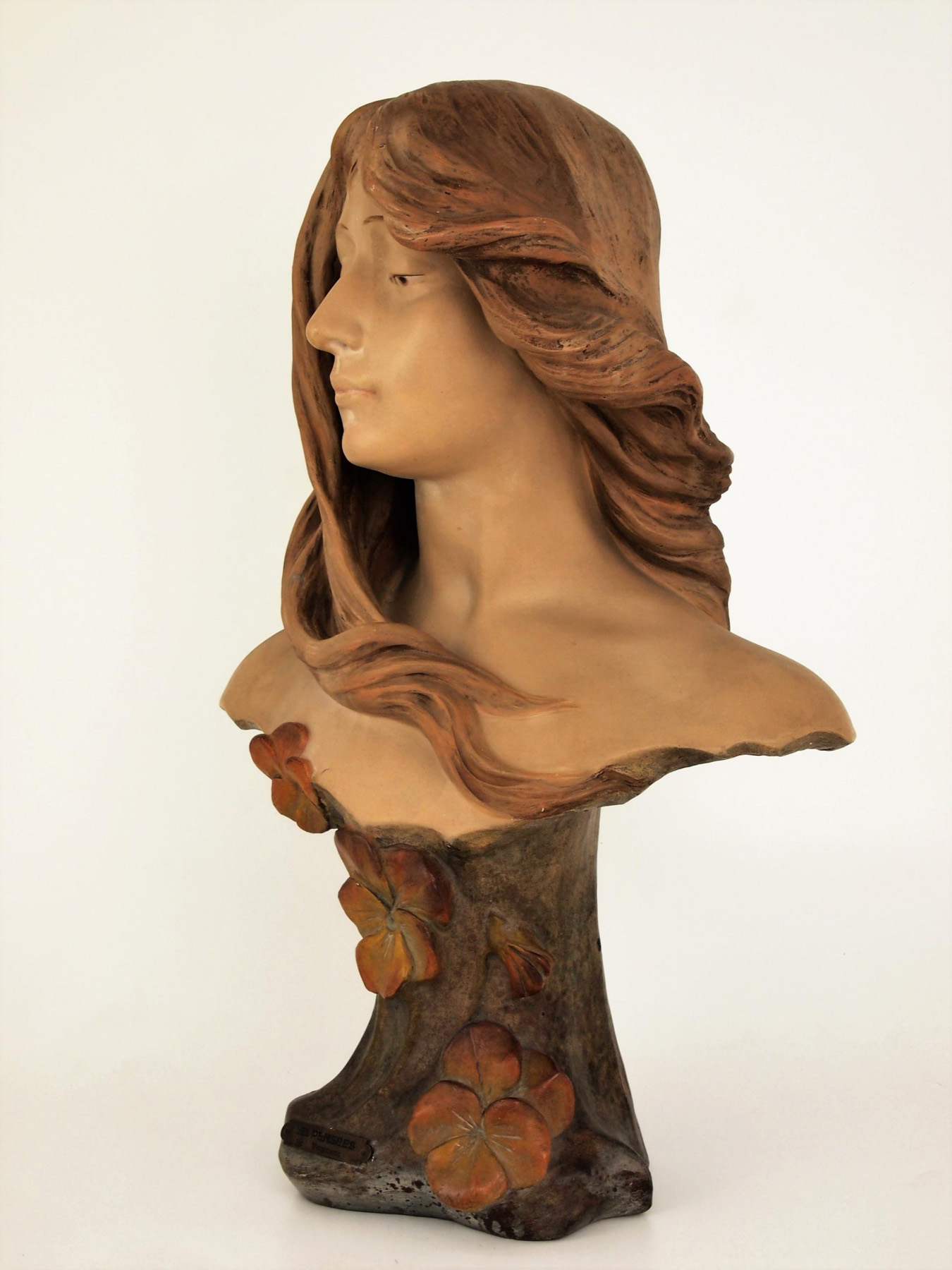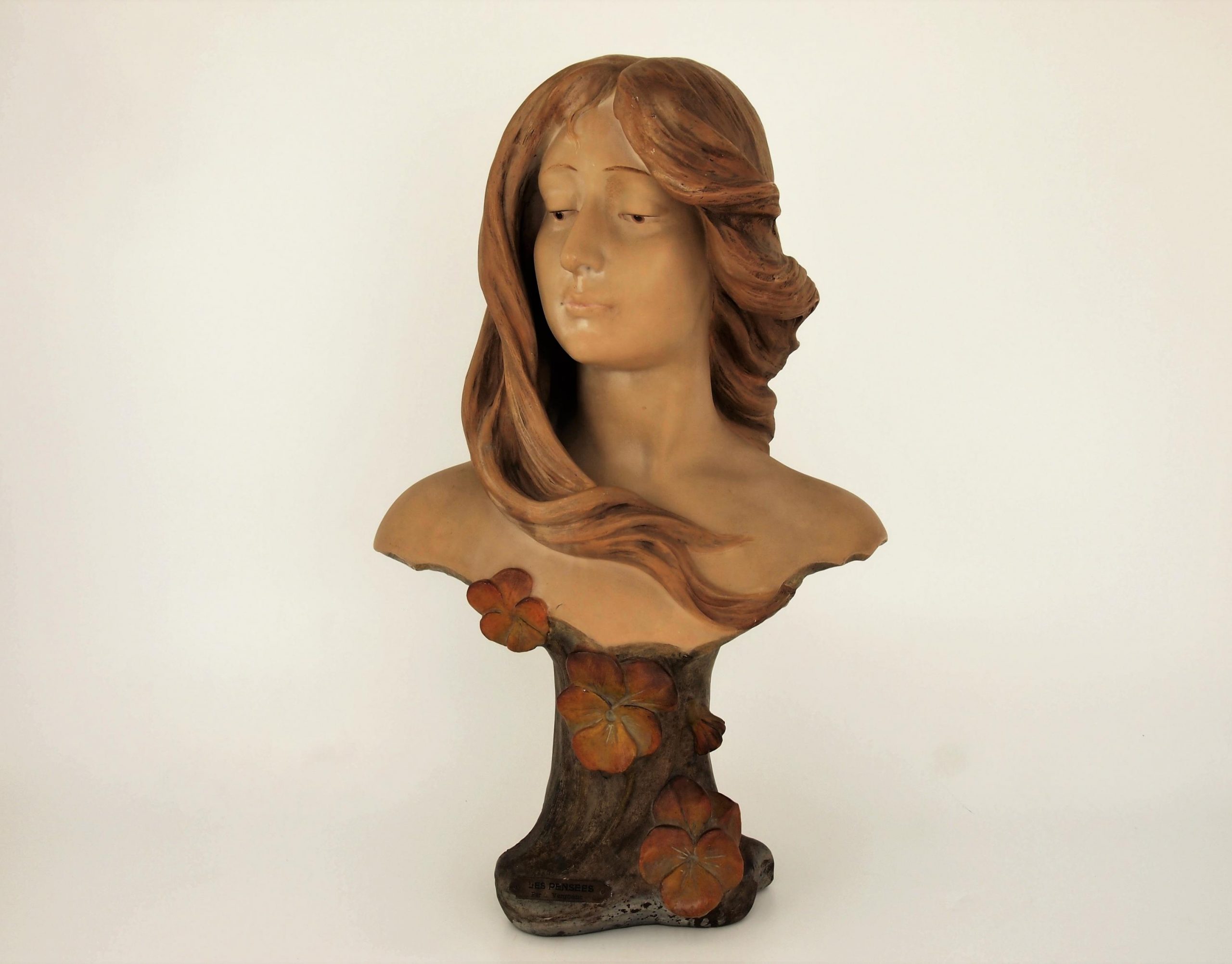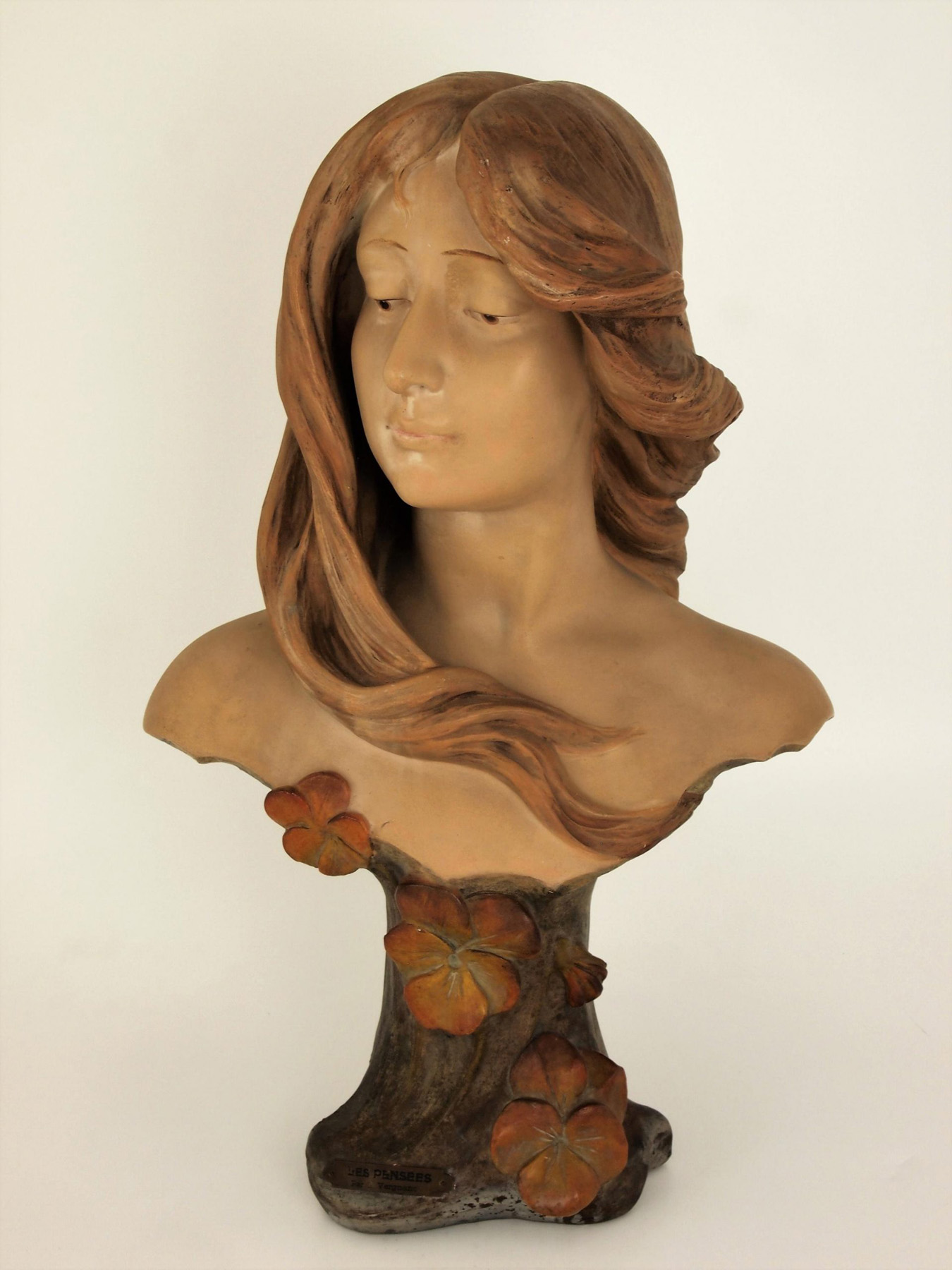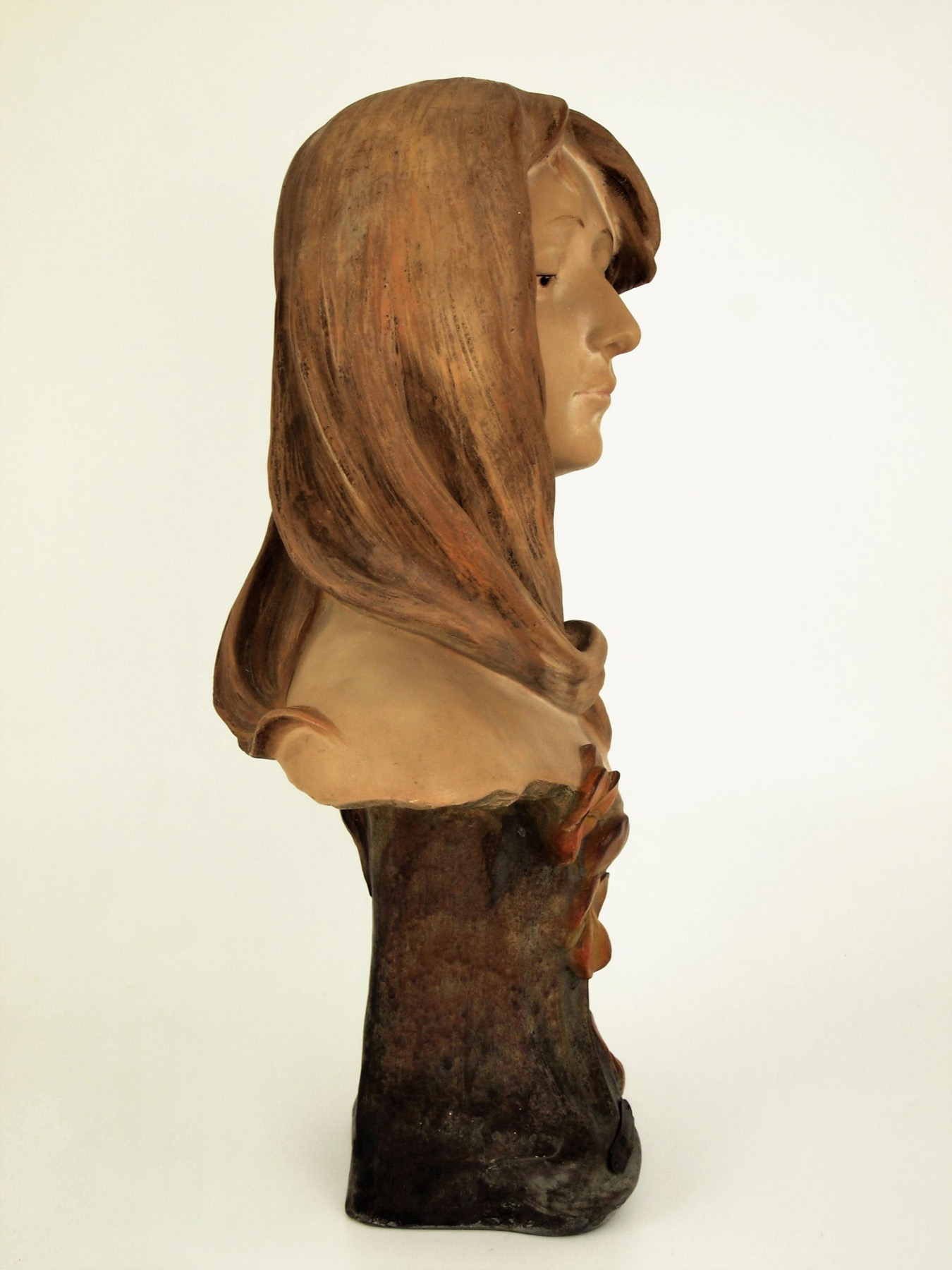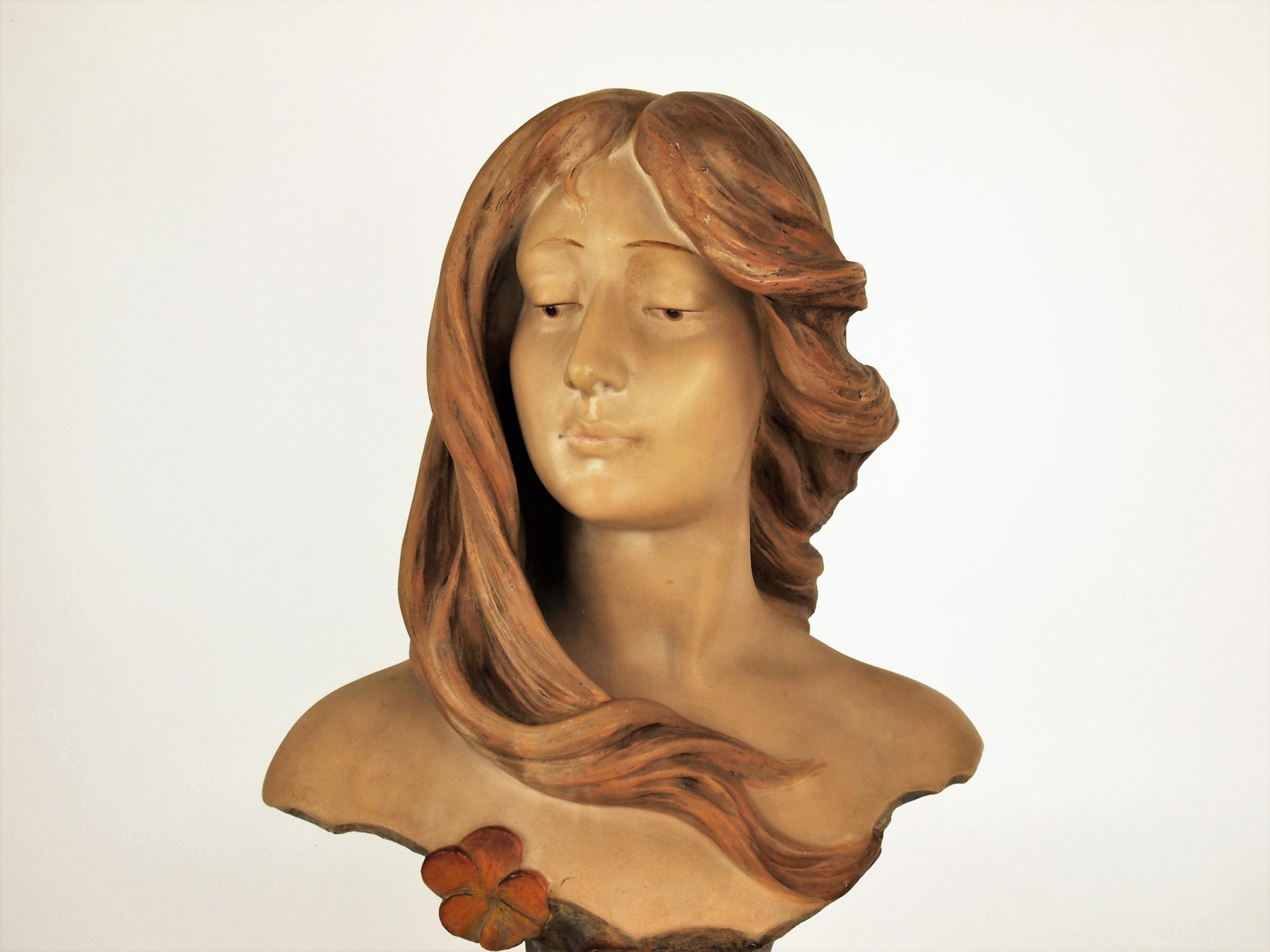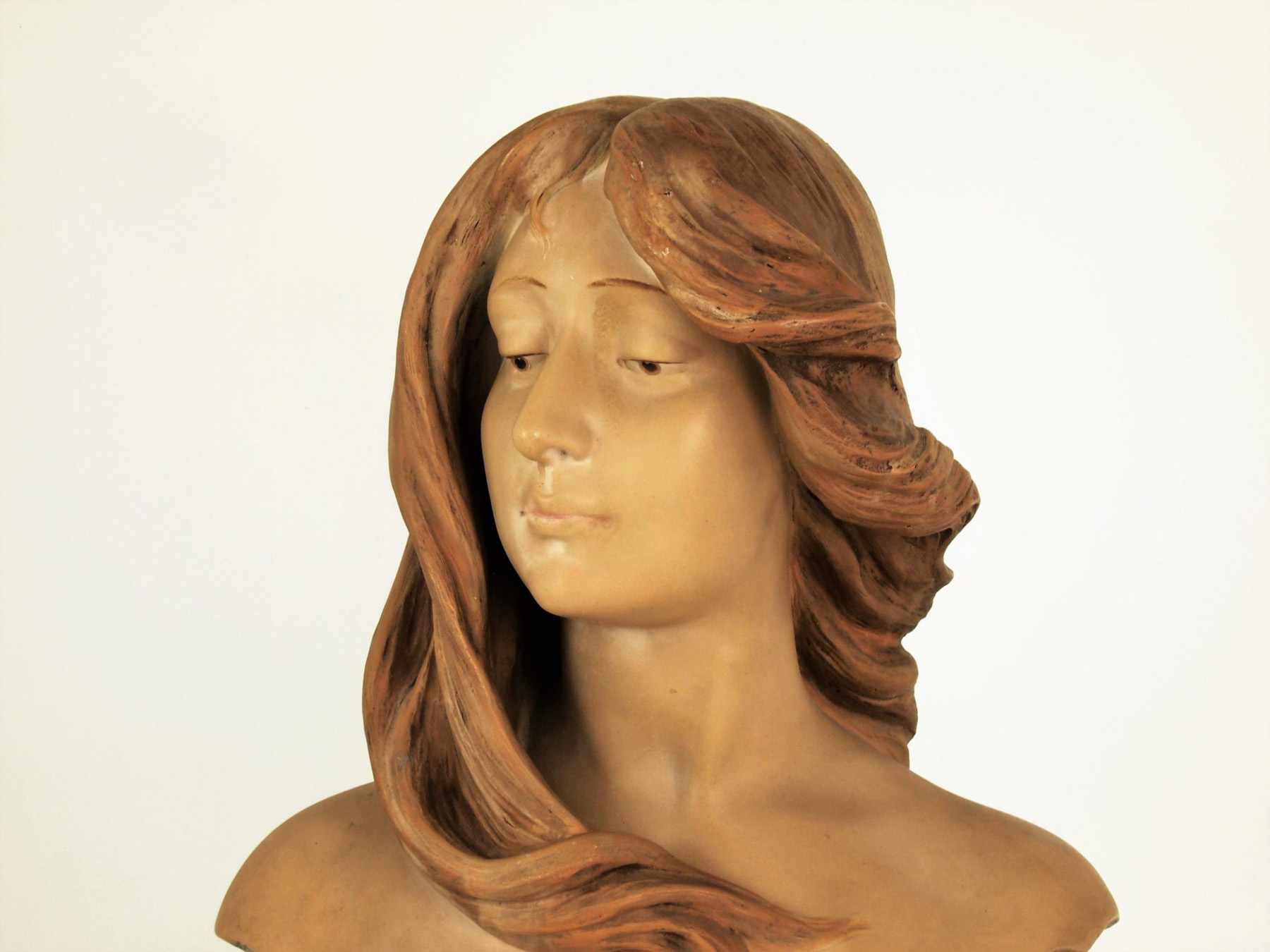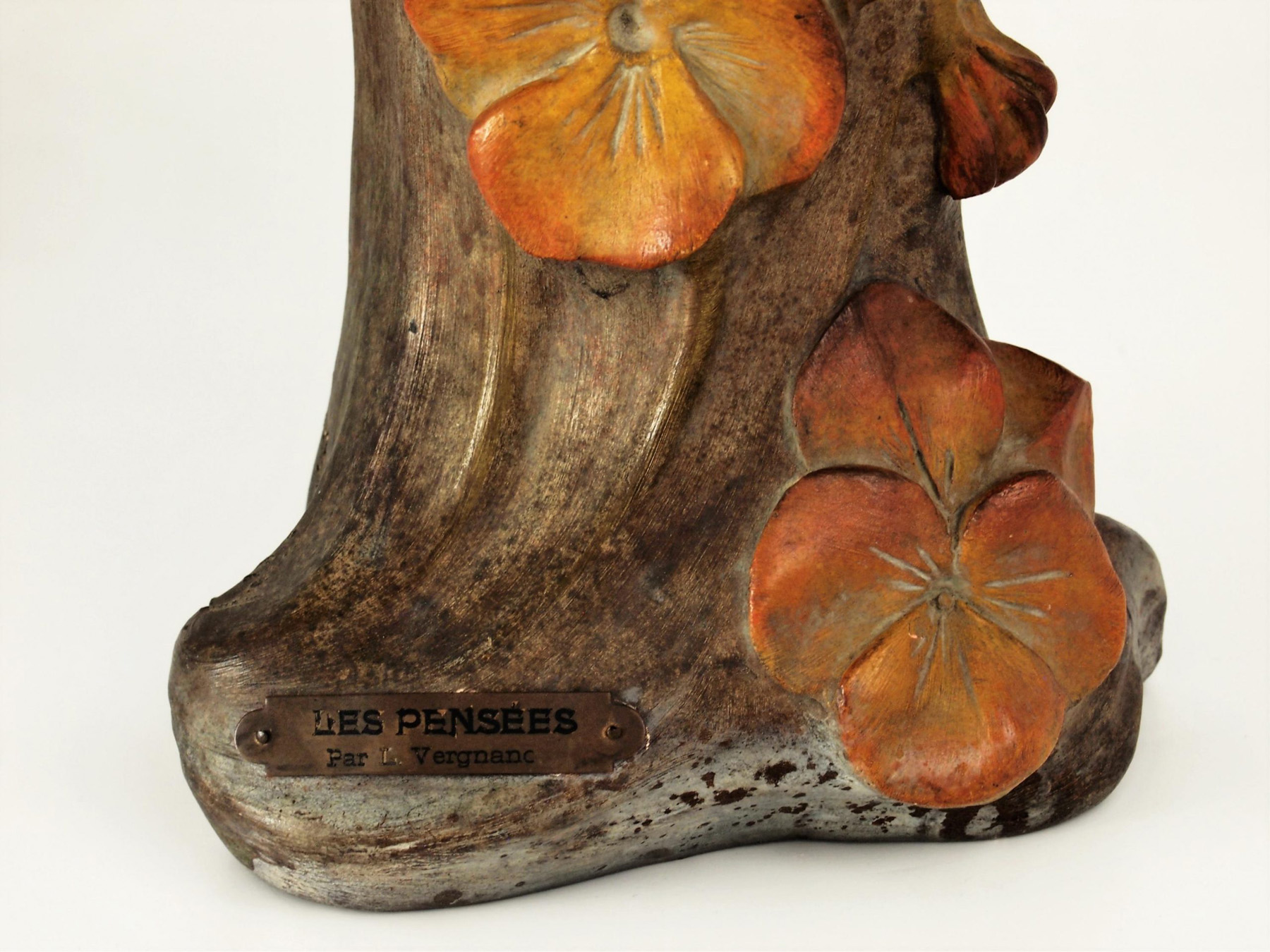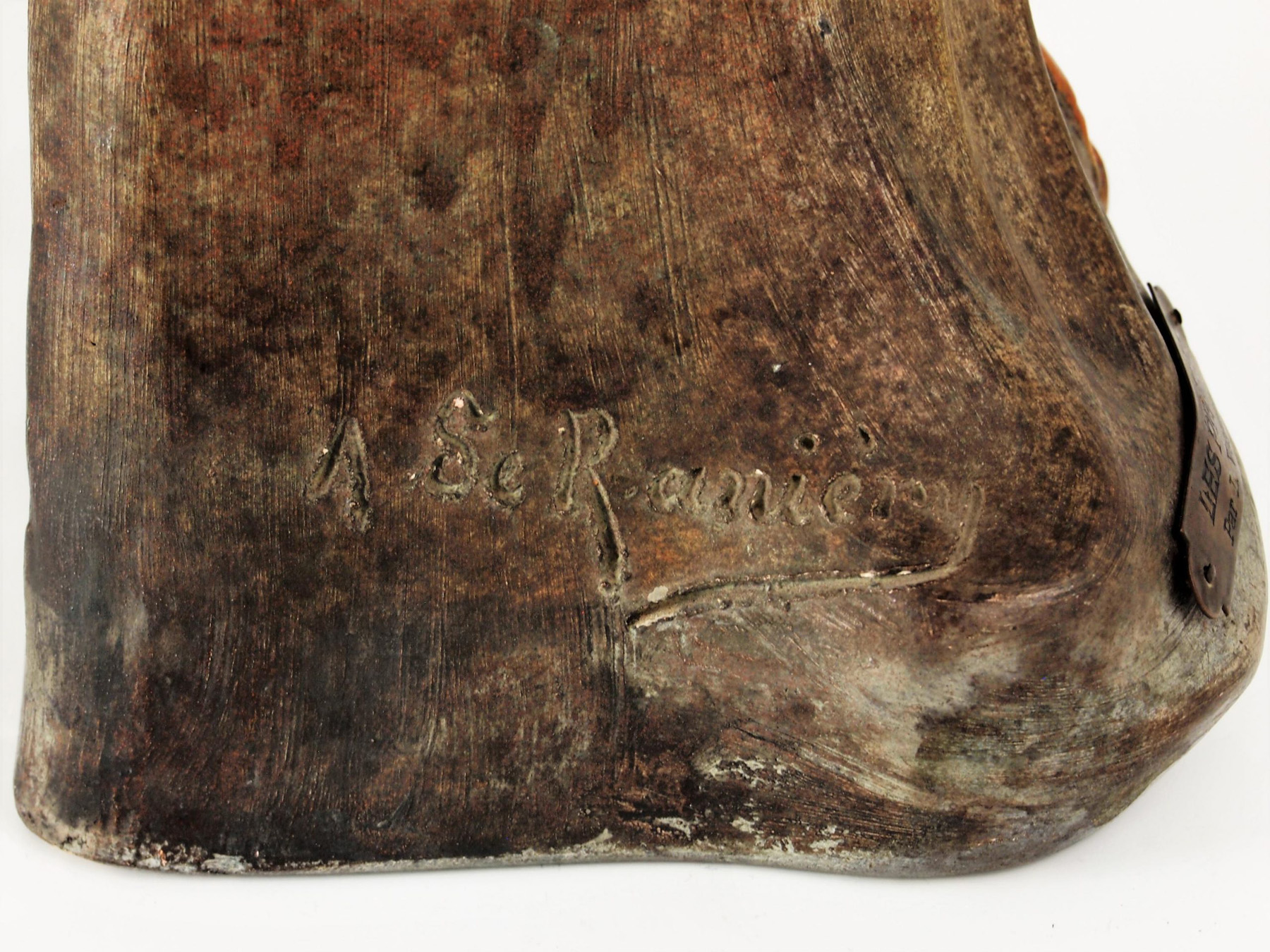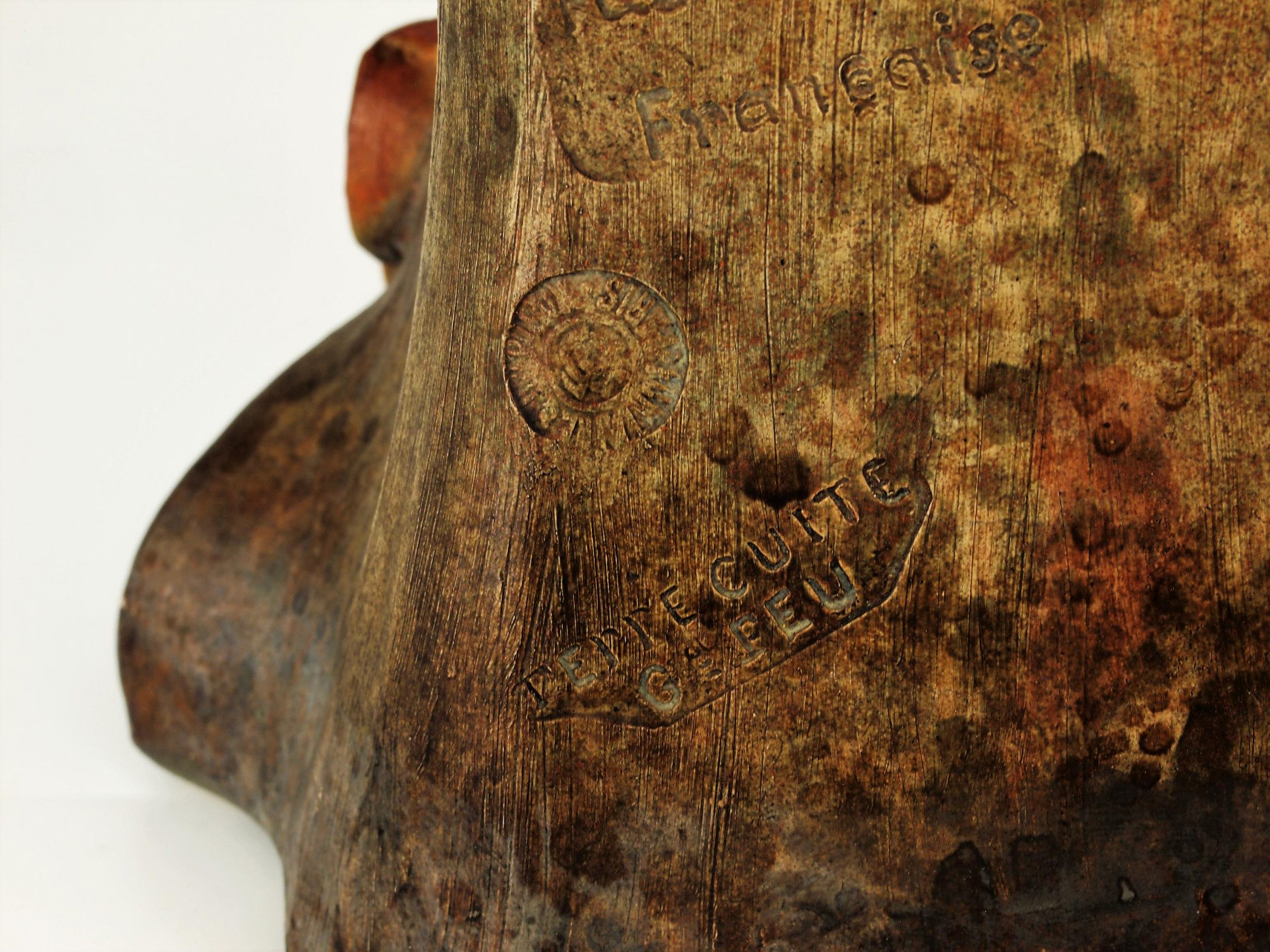Murrle Bennett Gold, Peridot and Mother-of-Pearl Bracelet*
Bracelet from Murrle Bennett crafted in 9 ct. gold, so very typical of the style of jewellery supplied by them to Liberty’s during the early 1900’s. Openwork in design with alternate rectangular and square sections,…
Archibald Knox Gold Pendant for Liberty
Gold pendant with an openwork entrelac design from the drawing board of Archibald Knox and dating from circa 1905. Set with a central blister pearl drop and with a turquoise matrix lower drop, this pendant…
‘Lady on The Seine’ by Dietz Edzard*
Ornately framed oil on canvas by the German born artist Dietz Edzard (1893-1963). This is an atmospheric half length portrait of an elegantly dressed young woman taking refreshment whilst seated on a verandah raised above…
Loetz ‘Candia’ Vase with Silver Overlay
Little cabinet vase from Loetz in opaque ‘Candia’ glass with a trefoil rim, further decorated with an applied Art Nouveau ‘Silberiris’ design in pure silver. Loetz collaborated with a company in the US known as…
WMF Flower Dish
Pewter flower dish from WMF with the original green cut glass removable liner. So Art Nouveau, with its flowing outline, featuring an openwork whiplash design framing leaves and berries of ivy. Originally electro-plated but most…
Contact Details
Tel: +44 (0)7802 872363
0345 6071772
Email: info@nouveaudecoarts.com
‘Les Pensées’ by Aristide de Ranieri
Item Description
Attractive good quality French Art Nouveau terracotta bust of a young lady decorated with pansy flowers, titled simply ‘Les Pensées’.
With her fine strong features and long pale auburn hair falling forward over one shoulder, she is a striking looking woman and it’s easy to see why she was modelled.
Sculpted by the Viareggio born Aristide de Ranieri (1865-1929), who came from a family of artists and worked mainly in Paris, having been sent there by his father in 1893.
Signed verso, with an impressed foundry stamp and also marked Fabrication en Francaise and Terre cuite Gebeu. There is a title plaque affixed to the front of the base which, rather strangely, bears the name L. Vergnano.
In good condition, with just a few very minor marks, and approximately 56 cm in height. Around 1900.
